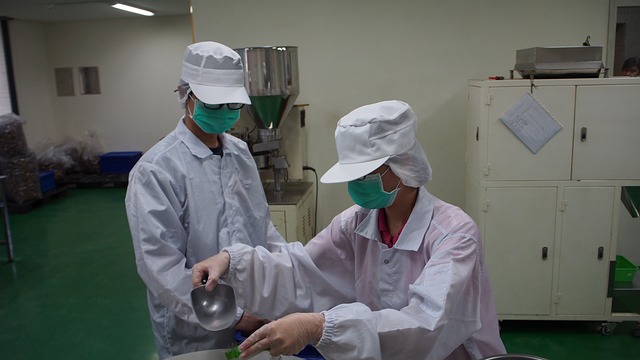Ready to eat foods (RTE) pose a significant risk of foodborne illness, if proper safety precautions are not followed. Key to keeping contaminants out of your RTEs and keeping regulatory action at bay is developing a strong environmental control program (ECP).
We spoke with Benjamin Miller, vice president of regulatory and scientific affairs at the Acheson Group, about the core components of an ECP and the biggest risk areas for producers of RTE foods.
There are three key components of an ECP:
- Hygienic design of a facility and equipment
- People management within a facility or operation
- Sanitation
“From a facility standpoint, you want a facility that is constructed well,” says Miller. “The floor, walls and ceilings are in good condition. You have adequate water drainage, if you’re going to be using a wet clean as part of your sanitation program and, from the equipment standpoint, you want equipment that is designed to be cleaned and is easy to clean. That is one of the areas where we see some of the biggest issues in terms of risk from environmental contaminants and pathogens.”
There are multiple challenges to keeping equipment clean and santized, notes Miller. And it starts with a lack of standardization. There is little regulation on equipment design for food processing, although there have been efforts among industry, with groups such as the 3-A Consortium in the dairy industry and the European Hygienic Engineering and Design Group (EHEDG). “But a lot of equipment is custom fabricated in the food manufacturing space, and equipment is expensive and has a long serviceable life span,” says Miller. “So, while we do understand the good principles of hygienic design, those are not always baked into equipment design, either because of the cost or the complexity of the design of the equipment itself.”
Equipment Considerations
When investigating new equipment or reviewing your existing equipment, you want to look at the materials used as well as placement of the equipment. “We think about stainless steel as being easy to clean and sanitize, but even with stainless steel there are different finishes that can make it more difficult to clean, so you need to think about the the different finishes that come on the equipment, the seams where the weld points are and how smooth those weld points are,” says Miller.
Flat surfaces can collect dirt, debris and water. “Rotating existing infrastructure or equipment components can make a significant difference in cleanability, drying and run off,” says Miller.
The placement of the equipment in the facility can also affect cleanability. “A good analogy is, if you look under the hood of your car some engines are in there so tight that you have to take everything apart to get in there to fix or replace a specific part,” says Miller. “Other cars, you can practically climb inside and get to every piece of equipment easily.”
Stay up to date on the latest news and information on food safety by subscribing to the weekly Food Safety Tech newsletter.
If equipment that needs to be cleaned and maintained on a regular basis is up against a wall, it will be very difficult to get back there to work on the equipment or do a thorough cleaning.
“You need to think about hygienic design, equipment design and placement, materials selection and cleanability. These are all really important. The other thing is flow—facility flow and people movement within a facility,” says Miller.
Facility Traffic Flow
Some pathogens will occur more frequently in areas where raw food is handled. People can also bring contaminants into a facility on their clothes or shoes. Limiting foot and equipment traffic within the facility—and restricting high care (or high risk) areas where RTEs are assembled and packaged—reduces the risk of food contamination.
“Ideally, you want a very clear delineation between where the food is raw up to the point where the kill step is applied and then where the RTE environment is,” says Miller. “You want a linear process and design flow from where you receive your raw materials, where you do your raw material prep and assembly, through to the area where you do your cook or kill step. The people and food should flow through the environment in a way that the risk of contamination from raw product is minimal.”
Developing a captive footwear program where employees in high care areas are provided with dedicated footwear and limiting traffic within those areas is required. “Often when we see people struggling with their environmental control programs, it’s because they don’t have adequate separation of people movement and equipment movement within the facility. Either everyone’s going everywhere or they have a defined program, it is just not enforced,” says Miller.
He relates the challenge to an age-old design adage: “There is a saying that, if you’re designing a campus, wait to put down the sidewalks until you see where people naturally walk,” says Miller. “Because they will choose the most efficient route to get from building A to building B. That’s often what happens in the food manufacturing or processing facility. If you don’t have active enforcement in high care areas, people will naturally take the most efficient route to go from point A to point B, and that creates risk.”
The best approach to reduce that risk is to engineer out the hazards, so people don’t have the option not to comply. “You can close off spaces that are natural cut throughs so that people cannot take the shortcut,” says Miller.
Visual programs, where employees in the high care areas wear white smocks and those in the low care areas wear red, for instance, can help with oversight and compliance. “But you also need to positively reinforce behavior, which gets to the hot topic of food safety culture,” says Miller. “Is it acceptable to cut through, or is somebody going to stop that person and report what is happening because your team understands the risk? And are you addressing that behavior in a nonpunitive way, and instead explaining why this is important? Companies should be rewarding people who call out safety hazards as well. The primary challenge for facilities that are not designed well in terms of either equipment design or traffic flow is that it takes time and effort to enforce and build that culture.”
Drainage and Sanitation
Drains can a source of contamination if not properly designed, used and maintained. Trench drains are harder to clean and maintain than circular drains. “People sometimes use their drains as a garbage disposal, which provides food for bacteria,” says Miller. “Limit the amount of food going down the drain and, ideally, you want to use a circular drain with stainless steel sieve in high care areas.”
In the past, it was not uncommon for facilities to perform high-pressure cleaning of drains, which can then aerolize the bacteria in the drain. “Use low pressure mechanical or steam cleaning of drains,” says Miller. “Again, this comes back to design. You want to start with well-designed drains and follow good sanitation practices.”
Sanitation and cleaning products used in food processing and manufacturing faciities are regulated and safe to use in the food environment, provided all instructions are followed. “Read chemical labels to make sure you are using the correct concentrations and the correct cleaning/rinse cycle,” says Miller. “The label determines how the cleaning agent should be used and whether it can come in contact with food.”
Companies can help maintain a strong ECP by giving their food safety and quality assurance teams a seat at the table, particularly when developing their capital improvement plans. “If you know a particular piece of equipment is really hard to clean and has been a source of contamination over the last couple of years, how can you repair or redesign that equipment so that it is easier to clean or replace it with something that’s going to be easier to clean?” says Miller. “A key piece of managing food safety is understanding where your highest risk points are, and then making sure those areas are part of your capital improvement plan.”





